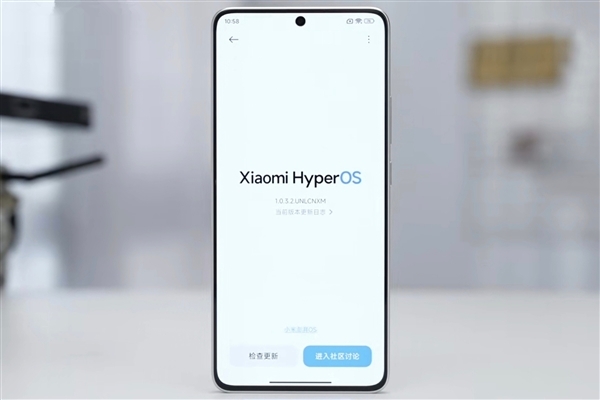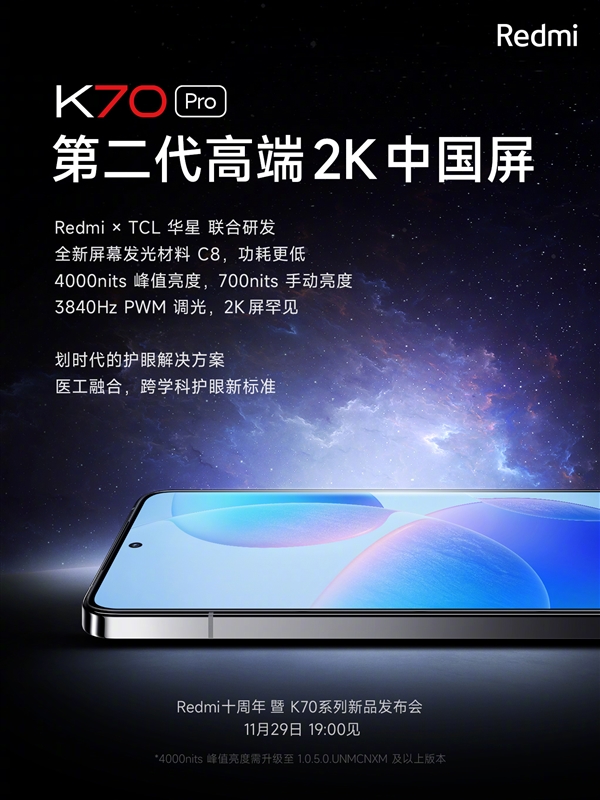
According to news on November 27, the Redmi K70 series will be released grandly on the 29th. Among them, the K70 The screen specifications of the Pro have also been officially announced recently. According to the editor's understanding, the K70 Pro will be equipped with the second-generation high-end 2K Chinese screen jointly developed by Redmi and TCL Huaxing.

K70 The Pro screen uses a new C8 luminescent material, which not only consumes less power, but also has higher brightness. The highest peak brightness can reach 4000nits, and the manual brightness can reach 700nits. It can remain clearly visible even in outdoor sunlight. The visual experience brought by this innovation makes K70 Pro stands out among similar products.
The screen resolution of K70 Pro reaches 2K, which is very rare among similar products. As the third generation product of the K series, compared with the traditional 1080P, its clarity has been greatly improved, and it can present more delicate and realistic pictures to users

On the technical side, the K70 Pro’s screen supports 3840Hz PWM dimming, this also marks the first time that Redmi, a subsidiary of Xiaomi, has launched a 3840Hz high-frequency dimming product. According to professional advice, dimming frequencies exceeding 3125Hz are considered zero-risk dimming, and Chinese industry standards also use 3125Hz to define stroboscopic qualified products. In contrast, the dimming frequency of the iPhone, which is regarded as the benchmark for screens, has always been maintained at 480Hz. This lower flicker may cause eye fatigue and visual damage.
The improvement of Redmi K70 Pro’s screen technology has not only attracted widespread attention in the domestic market, but also set a higher technical benchmark for Redmi globally. As the conference on the 29th approaches, more highlights about the Redmi K70 series will be revealed soon
The above is the detailed content of Redmi K70 Pro screen 3840Hz PWM dimming technology, Xiaomi's first high-frequency breakthrough in history!. For more information, please follow other related articles on the PHP Chinese website!




